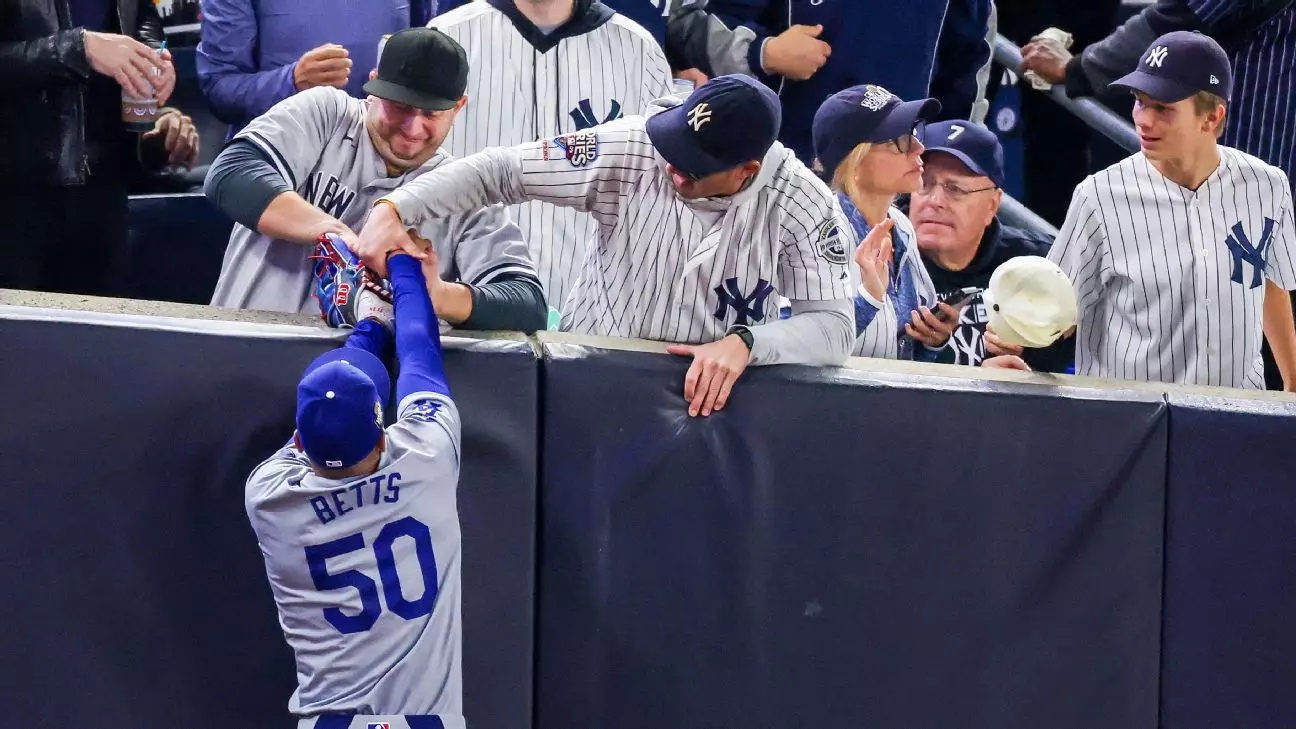During the recent World Series, two fans of the New York Yankees found themselves at the center of a controversy that shook the very foundation of sportsmanship and ethics at the iconic Yankee Stadium. The chaos unfolded during Game 4, when fans Austin Capobianco and John Peter decided to interfere with Los Angeles Dodgers star Mookie Betts, leading to their immediate banning from Game 5. The incident has sparked a broader conversation about what constitutes acceptable behavior in sports and how it can affect player performance as well as fan dynamics.
The bold, albeit misguided actions of Capobianco and Peter—grabbing Betts’ glove in an attempt to pry the ball from it—crossed a line that many fans, players, and officials agree should never be crossed. In a sport that thrives on tradition, respect, and passion for the game, such overt fan interference was deemed “egregious and unacceptable” by the Yankees organization. This event could serve as a pivotal moment for other teams and leagues looking to understand fan behavior and the boundaries that must be maintained for the safety of both players and spectators alike.
The Yankees acted decisively, announcing the ban while emphasizing the need for a safe and secure environment at every event held in their stadium. Their statement highlighted the pivotal importance of creating a foundation of safety that cannot be compromised, particularly during such high-stakes games. They further reinforced that true fan enthusiasm must never tip into aggression or jeopardize player safety.
In a commendable move, the Yankees chose to give the tickets for Game 5 to a young ill child and their family, making an impactful decision that underscores the team’s commitment to social responsibility over individual malfeasance. Such actions demonstrate that sporting events can bring joy and hope to those in need, rather than serving as a platform for negativity or reckless behavior.
Reactions from Players and the League
The League’s stance was also communicated through MLB Players Association Executive Director Tony Clark, who made it clear that player safety is of utmost importance. His promise to keep a vigilant eye on the outcomes of this incident ensures a systemic approach towards safeguarding players in the future. It is also a reminder that the League’s authority extends beyond the diamond and into the stands, where fan actions can profoundly impact the course of a game.
Interestingly, reactions from players themselves also varied. Yankees’ manager Aaron Boone did not mince words when denouncing the behavior, labeling it as unacceptable. He pointed out that there is simply no room for physical interaction when it comes to players; they must be allowed to perform without fear of interference. Conversely, Dodger player Alex Verdugo, while recognizing the foolishness of the act, seemed to take it in stride, attributing it to the passionate culture of New York sports fans. His reaction points to an ongoing cultural dialogue about fan behavior—how passion can sometimes get misdirected during intense sporting moments.
This incident should act as a wake-up call for both sports teams and fans regarding the limits of enthusiasm. As passionate as fans may be, actions that compromise the safety and security of players—who are already under tremendous pressure—should not be tolerated. Moreover, the responsibility lies not just with individual fans but also with the teams and leagues to innovate and enforce stricter protocols to ensure incidents like this do not recur.
As we reflect on the tumultuous events at Yankee Stadium, it becomes even more pertinent to engage in discussions about how sportsmanship can act as a bridge between players and fans. By cultivating an environment of respect and understanding, both players and fans can enjoy the game to its fullest while ensuring safety remains paramount. The lessons learned from this particular incident could set new standards for fan behavior, ultimately leading to a richer and more respectful sporting experience for generations to come.

Leave a Reply